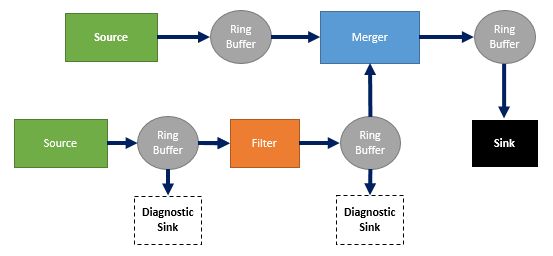1.3. Built-in Diagnostics
With any experiment, it is paramount to understand quickly whether the data in the stream is sensible or not. Because ring buffers lie in between each process in the data pipeline and they support multiple consumers, they act as built-in diagnostic points. A handful of applications are provided by NSCLDAQ to attach to these points for data inspection. The most basic and useful is the dumper program, which provides a textual dump of each ring item that passes through the ring buffer. It is a very low-level tool that gives insight into the details of the raw data. There are higher level tools though such as the ScalerDisplay program. The ScalerDisplay provides a user-configurable graphical display of scaler data with extra tools specific to scaler data.
The fact that ring buffers lie on either side of each process allows the user to understand the effect of the process on the data. You can easily attach sink processes to the desired rings to provide diagnostic information. Other tools like the ringbuffer program provide statistics for the ring buffers themselves so that you can quickly identify if any processes are introducing flow control or vying for producer status on the same ring buffer.
